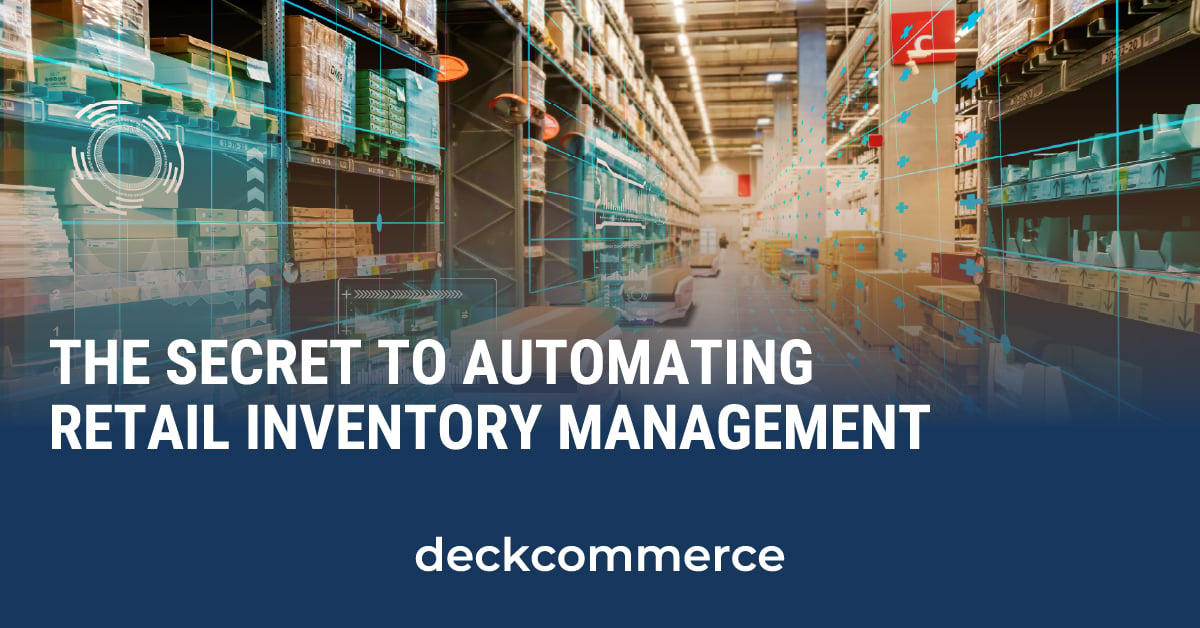
As consumer expectations rise and the market becomes more competitive, inventory management capabilities and limitations can make or break a DTC brand's success.
This is where the power of an Order Management System (OMS) comes into play.
An OMS streamlines inventory management by providing real-time visibility, automating critical processes, and enabling data-driven decision-making.
It sets the foundation for scalable growth and enhanced customer satisfaction.
What is an Order Management System?
An Order Management System is a digital platform or software solution that tracks sales, orders, inventory, and fulfillment across a business's entire operation. It acts as a central hub, integrating various aspects of the sales and distribution process, ensuring that everything from the initial order placement to final delivery is managed efficiently and effectively.
Key Functions of a Modern Order Management System
For DTC brands and retail stores, an OMS is indispensable for maintaining control over the order lifecycle, optimizing inventory levels, improving customer satisfaction, and ultimately driving growth and profitability.
Here’s why:
- Order Processing: The OMS captures orders from various channels, such as online storefronts, marketplaces, and brick-and-mortar locations, ensuring that all order details are centralized and accurately processed.
- Inventory Management: It provides real-time visibility into inventory levels across different locations or warehouses, helping businesses manage stock counts more effectively, avoid overstocking or stockouts, and make informed purchasing decisions.
- Fulfillment Coordination: The system coordinates the fulfillment process, determining the best shipping methods and routes, and ensuring that orders are packed and shipped efficiently.
- Customer Service: By centralizing order information, an OMS enables customer service teams to quickly access order statuses, history, and customer details, enhancing the customer support experience.
- Returns and Exchanges Management: An OMS streamlines handling returns and exchanges, facilitating smoother operations and maintaining customer satisfaction.
- Integration with Other Systems: A robust OMS integrates seamlessly with other systems, such as CRM, ERP, and accounting software, creating a cohesive ecosystem that enhances data accuracy and operational efficiency.
Where Does an OMS fit in my Tech Stack?
One of the most appealing aspects of a modern OMS is the ability to integrate into existing technology ecosystems. With robust integration capabilities, an OMS can connect with legacy systems and other commerce tools, enabling a more modular and composable commerce approach.
The Impact on DTC Retail Inventory
An OMS offers a strategic solution for DTC brands operating on older systems or those looking to enhance their tech stack without a complete overhaul.
It provides the agility and insight needed to adapt to market changes, improve inventory accuracy, and, ultimately, deliver a superior customer experience.
Why Should I Keep Reading?
In this blog, we'll explore the best practices for retail inventory management tailored for DTC retail businesses and demonstrate how an OMS can automate and streamline these processes.
Whether you're grappling with forecasting demand, allocating inventory, or optimizing order fulfillment, understanding the role of an OMS can unlock new levels of efficiency and growth for your brand.
Automating Inventory Management Processes with an Order Management System
Effective retail inventory management is not just about stock management; it's about optimizing entire inventory systems to respond dynamically to market demands, drive sales, and elevate customer experiences.
Challenges in DTC Inventory Management |
|
|
Overstocking |
Excess inventory can tie up capital and increase storage costs, reducing profitability. |
|
Stockouts |
Insufficient inventory levels can result in lost sales, eroding customer trust and loyalty. |
|
Demand Forecasting |
Predicting future sales accurately is challenging, especially with fluctuating market trends and consumer preferences. |
|
Inventory Allocation |
Distributing inventory efficiently across various channels and locations to meet customer demand without overstocking is complex. |
|
Order Fulfillment |
Ensuring timely and accurate order processing and delivery to enhance customer satisfaction can be difficult. |
|
Returns Management |
Handling returns efficiently, restocking items, and managing reverse logistics pose significant challenges. |
|
Real-Time Inventory Tracking |
Maintaining up-to-date inventory levels across all sales channels to prevent over-selling or stockouts is critical. |
|
Supplier Coordination |
Managing relationships with suppliers and ensuring timely replenishment of inventory requires effective coordination. |
How an OMS Powers Retail Inventory Management Best Practices
By integrating advanced inventory management capabilities, an OMS empowers DTC brands to navigate inventory management challenges with greater agility and insight.
Here's how.
Provides Cross-Channel Visibility & Automated Tracking
An OMS integrates data across all sales channels, providing a unified view of inventory. This holistic perspective is crucial for businesses operating in multiple marketplaces, physical stores, or online platforms. This consolidated view allows for synchronized inventory management across all points of sale and reduces discrepancies that can lead to overstocking or stockouts.
By automating the process of inventory tracking and updates, an OMS ensures that stock levels are adjusted in real-time as sales occur, returns are processed, or new shipments arrive.
This automation reduces the need for manual inventory counts and minimizes the risks of human error, leading to more accurate inventory records and operational efficiency.
Enables Accurate Demand Forecasting & Inventory Optimization
An OMS uses advanced algorithms and machine learning to analyze trends from historical sales data, seasonal patterns, promotional impacts, and market dynamics.
This analysis provides nuanced demand forecasts, enabling DTC brands to align their inventory levels closely with expected demand. Thus, stock levels can be optimized to meet customer needs without incurring excess holding costs.
The OMS's forecasting tools allow businesses to proactively adjust their inventory strategy, whether it's ramping up stock in anticipation of a busy season or scaling down to prevent overstock.
By maintaining optimal inventory levels, businesses can improve cash flow, reduce storage costs, and ensure product availability.
Informs Strategic Inventory Allocation and Smarter Order Fulfillment
An OMS aids in strategically allocating inventory across warehouses and retail locations based on various factors like demand forecasts, shipping logistics, and storage costs.
This strategic distribution ensures that inventory is positioned closer to the highest demand, reducing shipping times and costs while improving customer satisfaction.
When an order is placed, the OMS selects the best fulfillment location based on the item's availability, the customer's location, and the fastest shipping route. This intelligent routing ensures that customers receive their orders promptly, enhancing their shopping experience and the likelihood of repeat business.
Multi-Warehouse Management
In the context of multi-warehouse management, an OMS offers sophisticated capabilities to manage inventory across multiple locations, enhancing efficiency and customer satisfaction.
- Optimal Stock Distribution: An OMS determines the best way to distribute inventory across warehouses, considering factors like space availability, geographic demand, and transportation costs. This ensures efficient utilization of storage space and resources.
- Intelligent Order Routing: The system intelligently routes orders to the warehouse that can most efficiently fulfill them based on inventory availability, proximity to the customer, and shipping logistics, which helps reduce delivery times and costs.
- Centralized Control: Despite the geographical spread of warehouses, an OMS provides a centralized platform to monitor and manage inventory, orders, and fulfillment processes across all locations, ensuring consistency and control.
Removes Inventory Complexities in Omnichannel Fulfillment Methods
An Order Management System is crucial in orchestrating omnichannel fulfillment, playing a key role in unifying the customer journey across diverse sales and fulfillment channels.
This system ensures that regardless of how or where a customer chooses to interact with a brand—be it through online shopping, in a physical store, or via a mobile app—the experience remains seamless, integrated, and consistent.
Enhanced Customer Experience Across Channels
The OMS provides a holistic view of the customer's interaction and transaction history, enabling brands to offer personalized experiences. For instance, if a customer browses items online but decides to purchase in-store, the OMS can track these interactions, allowing for a seamless transition between channels.
Unified Inventory Visibility
One of the key strengths of an OMS in omnichannel fulfillment is its ability to provide real-time inventory visibility across all channels. This feature ensures that customers have accurate information about product availability, whether they're shopping online, checking stock in-store, or ordering through a call center.
Flexible Fulfillment Options
With an OMS, retailers can offer convenient fulfillment options to customers, such as BOPIS (Buy Online, Pick up In-Store), ship-from-store, and even curbside pickup. The system can determine the optimal fulfillment method based on inventory location, customer preference, and logistical considerations, enhancing customer satisfaction and loyalty.
Streamlined Returns Management
An OMS also simplifies the returns process, a critical aspect of customer satisfaction in omnichannel retailing. It allows customers to easily return or exchange products, whether they purchased them online or in-store, regardless of the chosen return channel.
This flexibility improves the customer experience and streamlines inventory management and restocking processes.
Deck Commerce OMS vs. Stand-Alone Retail Inventory Management Systems |
||
|
Integration Capabilities |
Integrates various aspects of retail operations for holistic management. |
Primarily focused on inventory, with limited integration with other systems. |
|
Omnichannel Support |
Designed to support seamless omnichannel retail strategies. |
Typically optimized for specific retail channels, may not support omnichannel approaches. |
|
Fulfillment Options |
Facilitates advanced fulfillment options like BOPIS, ship-from-store, and dropshipping. |
Limited fulfillment functionalities may require additional systems for comprehensive fulfillment management. |
|
Customer Service Integration |
Centralizes customer and order data, enhancing customer service capabilities. |
Lacks integrated customer service features, focusing mainly on inventory aspects. |
|
Scalability |
Built to scale with the business, accommodating new channels and market expansions. |
May require significant modifications or additional solutions to scale with business growth. |
|
Inventory Management |
Comprehensive inventory management as part of a broader system. |
Specialized focus on detailed inventory tracking and management. |
|
Data Flow |
Seamless data flows across all connected systems, reducing data silos. |
Potential for data silos due to limited connectivity with other systems. |
|
Customer Experience |
Enhances customer experience with consistent service across all channels. |
Focuses on inventory efficiency, with indirect impact on customer experience. |
The #1 Retail Inventory Management Software for DTC Brands
Don't let inventory management be the bottleneck of your business growth.
Contact our team today to learn how implementing an order management system like Deck Commerce can automate your inventory management processes and grow your bottom line.
.png?width=1200&height=627&name=Shoptalk%20Ads%20(5).png)
